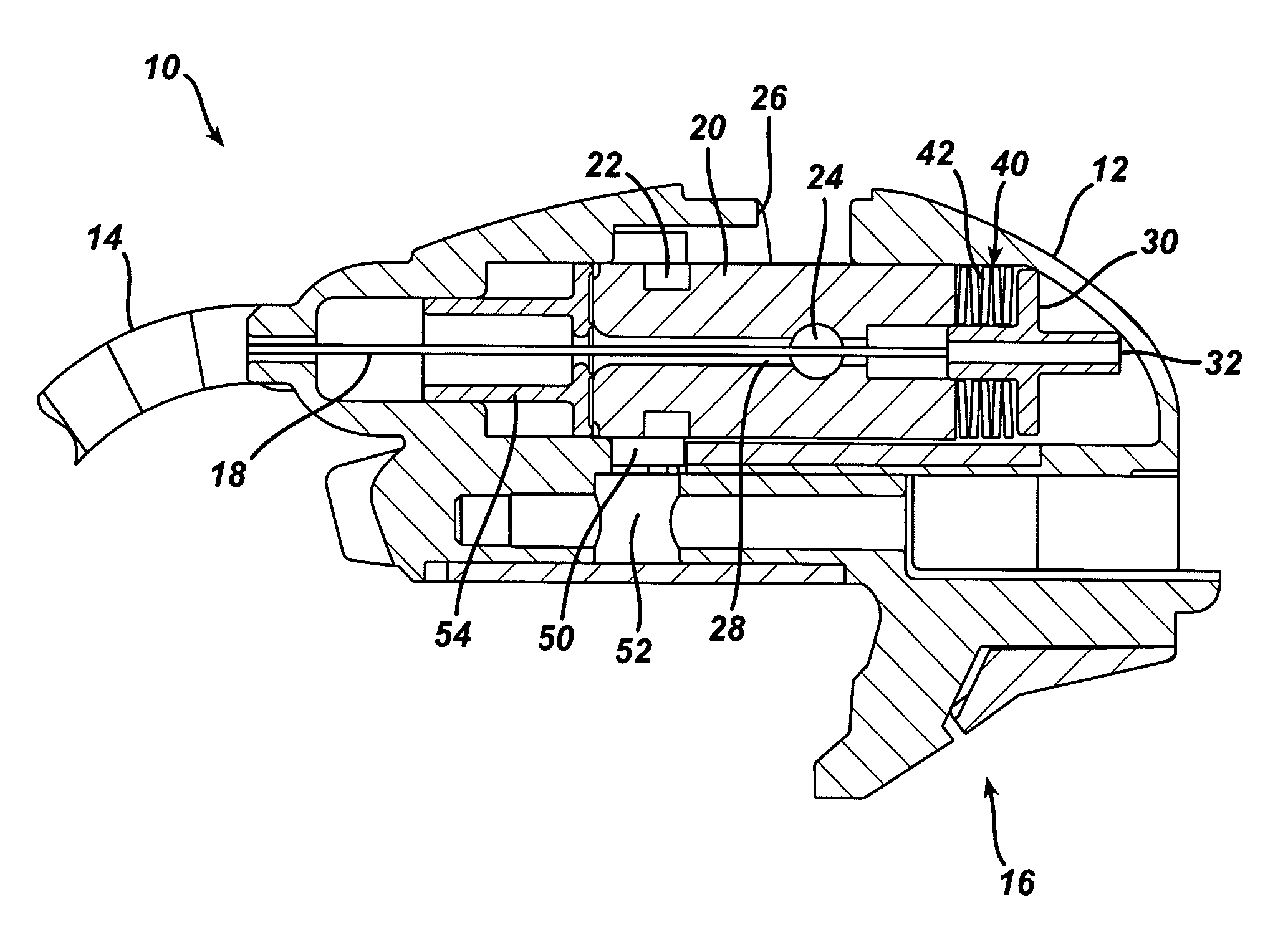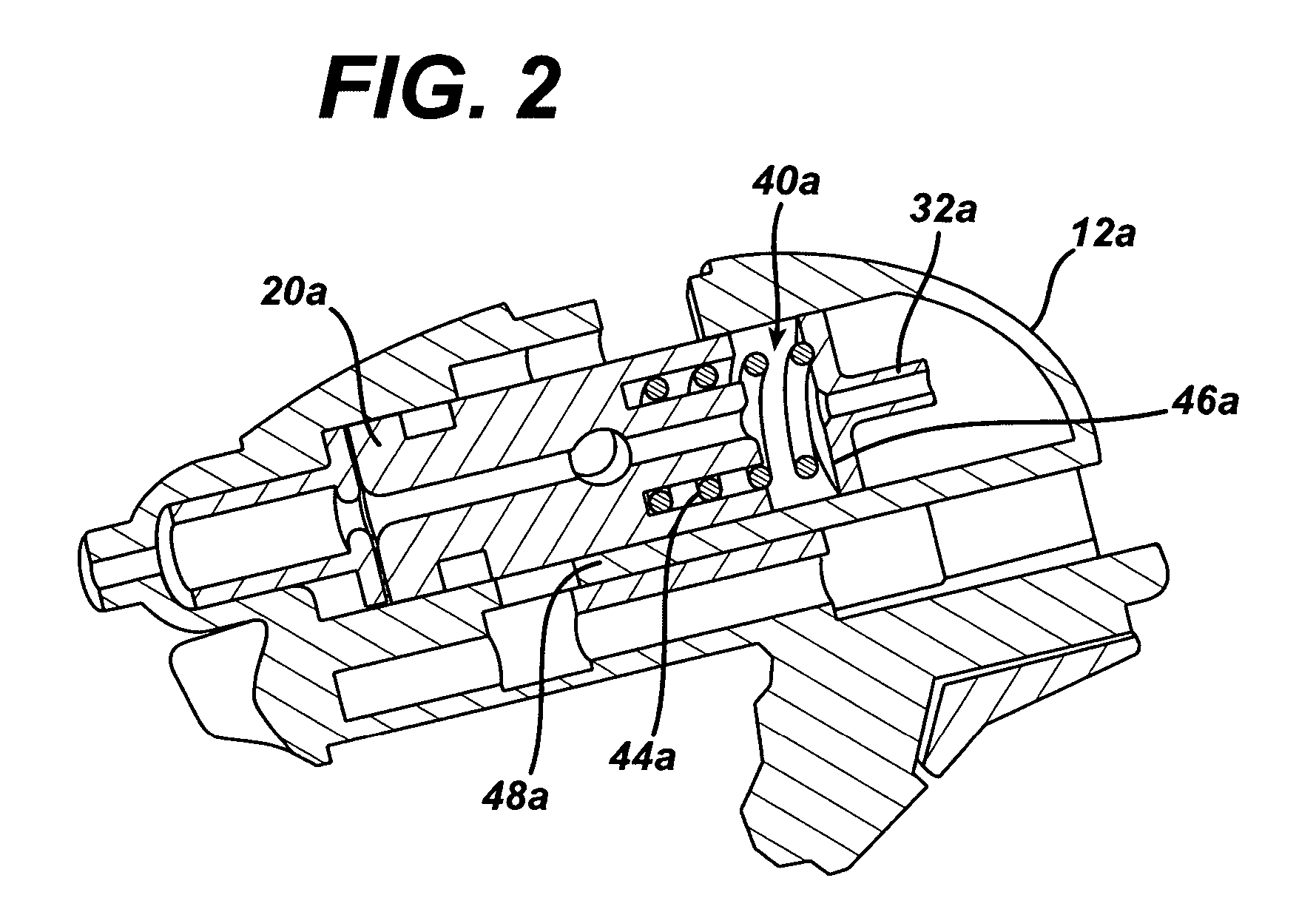Flexible shaft stabilizing devices with improved actuation
a stabilizer device and flexible shaft technology, applied in the field of surgical instruments, can solve the problems of inability to achieve the desired or necessary stiffness to hold the intended straight or curved position of the shaft, and the device is not without drawbacks, so as to improve the repeatability of positioning a rigid shaft, the effect of minimizing the permanent deformation of the tensioning element and improving the flexibility of the sha
- Summary
- Abstract
- Description
- Claims
- Application Information
AI Technical Summary
Benefits of technology
Problems solved by technology
Method used
Image
Examples
Embodiment Construction
[0027]Experimentation has shown that for the certain shaft size and cam mechanism under test, using a wire-braided cable as a tension element, pre-loaded with 150 lbs of tension in a rigid straight configuration required 340 lbs. of tensile load to activate in a curved configuration. This additional loading exceeded the elastic limit of the cable, and stretched the cable by 0.06 in., which stretching degraded the shaft stiffness of subsequent activations. To accommodate for this, this invention provides an elastic means allowing compliance in the flexible shaft device without stretching the tension element.
[0028]Turning now to FIG. 1, shown is the proximal base 12 of the flexible shaft, generally 10. The shaft portion 14 extends distally from the proximal base 12. The proximal base 12 may include a mounting bracket 16, in this exemplary embodiment along an underside thereof. The mounting bracket 16 facilitates the use of the flexible shaft 10 in conjunction with a retractor, rib-spr...
PUM
 Login to View More
Login to View More Abstract
Description
Claims
Application Information
 Login to View More
Login to View More - R&D
- Intellectual Property
- Life Sciences
- Materials
- Tech Scout
- Unparalleled Data Quality
- Higher Quality Content
- 60% Fewer Hallucinations
Browse by: Latest US Patents, China's latest patents, Technical Efficacy Thesaurus, Application Domain, Technology Topic, Popular Technical Reports.
© 2025 PatSnap. All rights reserved.Legal|Privacy policy|Modern Slavery Act Transparency Statement|Sitemap|About US| Contact US: help@patsnap.com



